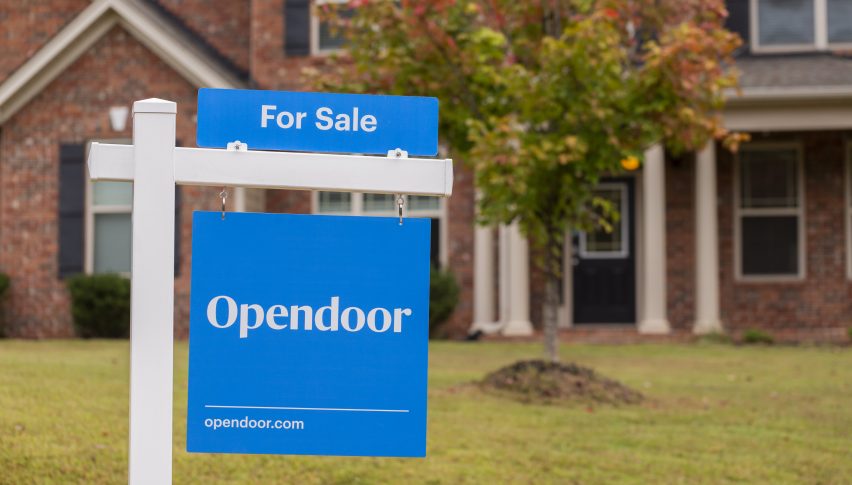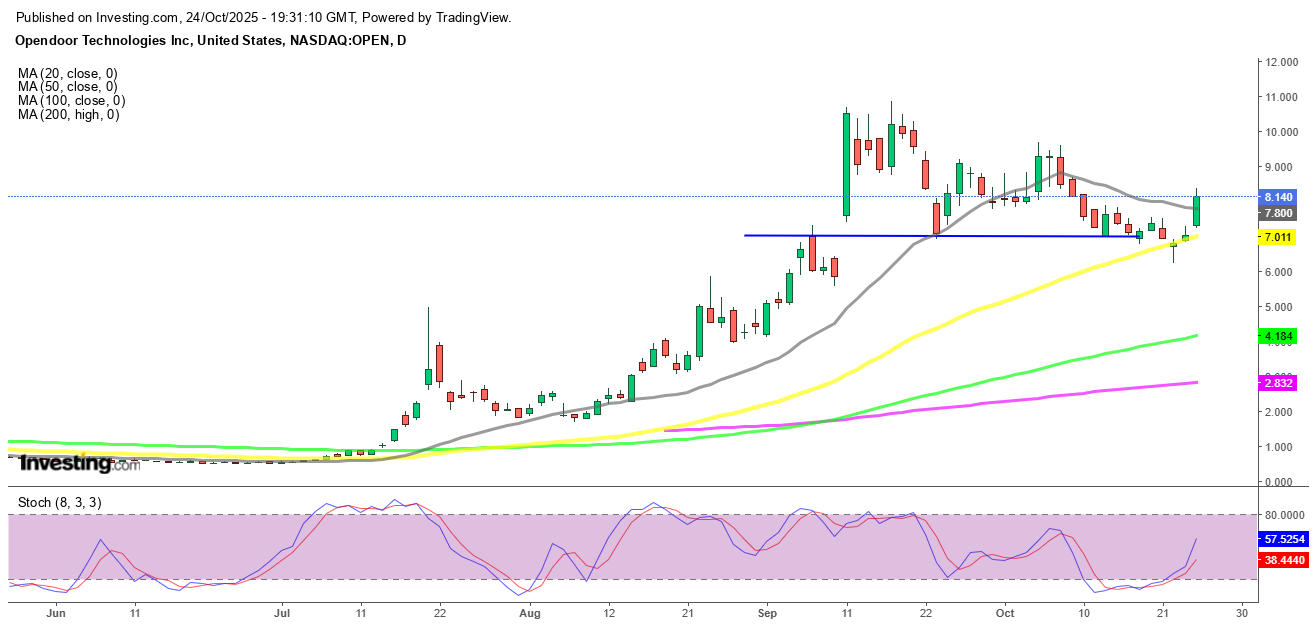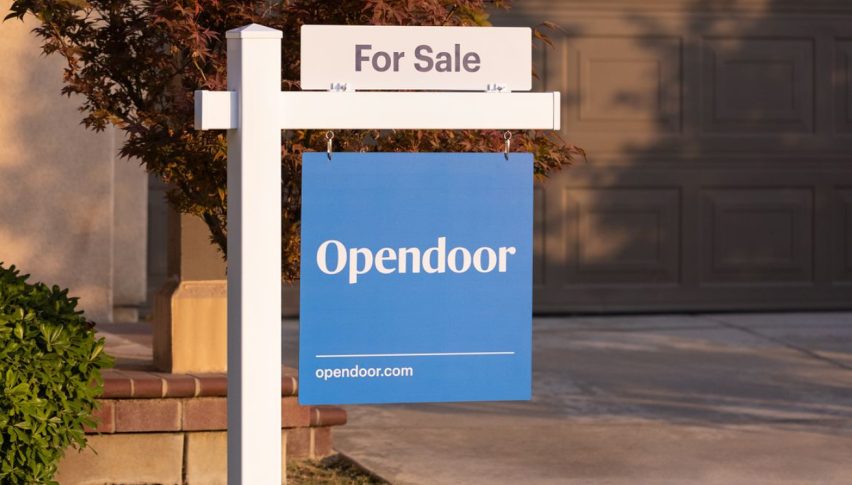Opendoor OPEN Stock Rallies as Falling Mortgage Rates Revive Housing Optimism
After a month-long retreat, Opendoor Technologies (NASDAQ: OPEN) has found its footing again, climbing 14% on Friday as lower mortgage...

Quick overview
- Opendoor Technologies has experienced a remarkable recovery, climbing 14% recently due to lower mortgage rates and renewed investor confidence.
- The company's stock surged from $0.50 in June to $10.85 by early October, driven by social media enthusiasm and speculation about its technology-driven reinvention.
- Despite a recent pullback, the stock found support around its 50-day moving average, with optimism fueled by expectations of declining mortgage rates and institutional investments.
- Leadership changes and a strategic reset are aimed at restoring operational discipline, although financial challenges remain, including thin margins and high debt levels.
After a month-long retreat, Opendoor Technologies (NASDAQ: OPEN) has found its footing again, climbing 14% on Friday as lower mortgage rates and renewed confidence breathe life into one of 2025’s most dramatic recovery stories.
A Meteoric Comeback Story
Opendoor became one of the standout comeback names of 2025 after staging a remarkable turnaround from just $0.50 in June to $10.85 by early October, marking a 2,000% rally that captured market attention. The surge transformed the property-tech firm into a retail trading favorite, powered by social media enthusiasm and speculation about the company’s technology-driven reinvention.
The optimism was reinforced by expectations that declining U.S. mortgage rates could stimulate home-buying activity and lift Opendoor’s housing transaction volumes. However, following this extraordinary rise, the stock entered a sharp pullback phase, falling over a month as traders booked profits and weaker quarterly results dampened sentiment.
Support Levels Hold Firm
Despite the decline, the stock found solid footing around the 50-day simple moving average (SMA), where a bullish doji pattern formed midweek — often signaling a potential reversal. The move coincided with macroeconomic support, as Federal Reserve Chair Jerome Powell hinted that rate cuts could arrive in early 2026 amid softening labor market conditions.
OPEN Chart Daily – Will the Buyers Push Above the 20 SMA?
As a result, the average 30-year U.S. mortgage rate dropped to 6.19%, its lowest in over a year, rekindling optimism in the housing sector. This development sparked renewed buying momentum in Opendoor shares, helping the stock reclaim the $8 level and push decisively above the 20-day SMA, suggesting the potential for further upside.
Institutional Confidence Adds Fuel
Investor sentiment received an additional boost after Jane Street Group disclosed a 5.9% stake in Opendoor, equivalent to more than 44 million shares, reinforcing the company’s investment appeal. Shortly after, Morgan Stanley raised its price target from $2 to $6, a bold revision that signaled renewed institutional faith in Opendoor’s growth trajectory.
These endorsements have given traders confidence that the company’s turnaround narrative might still have room to run — especially with the backdrop of easing financial conditions and a leadership shake-up focused on stability.
Leadership Overhaul and Strategic Reset
In an effort to rebuild credibility and strengthen execution, Opendoor announced significant leadership changes. Co-founder Keith Rabois returned as board chair, while Kaz Nejatian, a former Shopify executive, assumed the role of CEO. The leadership team has pledged to restore operational discipline and introduce a refreshed strategic roadmap during the upcoming Q4 earnings call in November, which could serve as a catalyst for further investor confidence.
Financial Challenges Remain
Beneath the impressive stock moves, Opendoor’s financial position remains strained. The company generated $5.15 billion in quarterly revenue, yet margins stayed thin, with a gross margin of 8.1% and a net loss margin of –5.89%. Debt levels remain elevated, reflected in a debt-to-equity ratio of 3.46, while return on equity (–39.35%) underscores the challenges ahead.
While top-line growth has been strong, sustained profitability remains elusive, making the company’s rebound largely dependent on macro conditions and investor sentiment rather than fundamentals alone.
Macro Tailwinds Could Drive the Next Phase
Broader market forces will play a crucial role in determining Opendoor’s next move. If the Federal Reserve begins easing rates in early 2026, lower borrowing costs could rejuvenate housing demand — a critical tailwind for Opendoor’s business model. Conversely, if inflationary pressures persist, renewed tightening could once again weigh on speculative names like OPEN.
For now, however, falling mortgage rates and rising institutional interest suggest that the recovery momentum may still have room to build.
- Check out our free forex signals
- Follow the top economic events on FX Leaders economic calendar
- Trade better, discover more Forex Trading Strategies
- Open a FREE Trading Account

